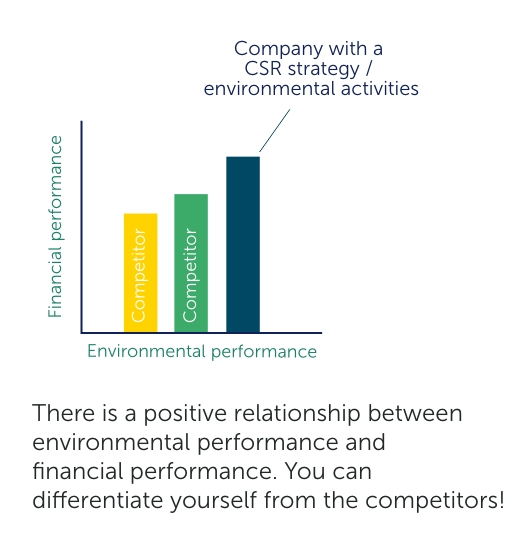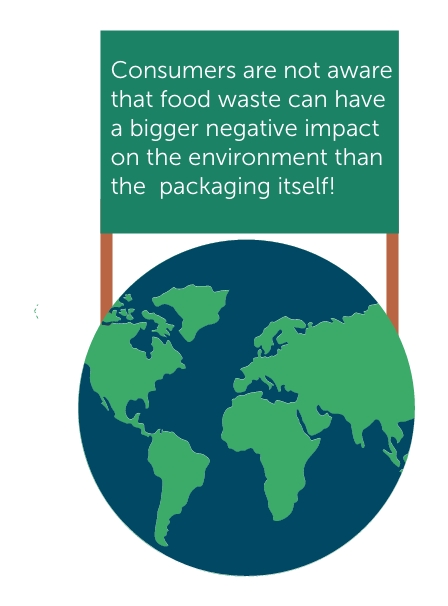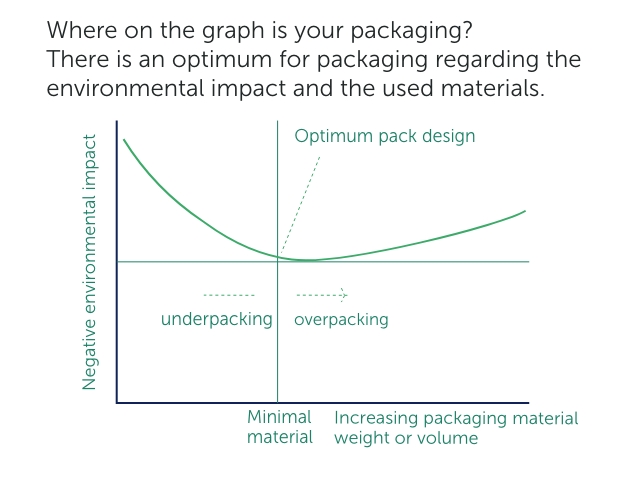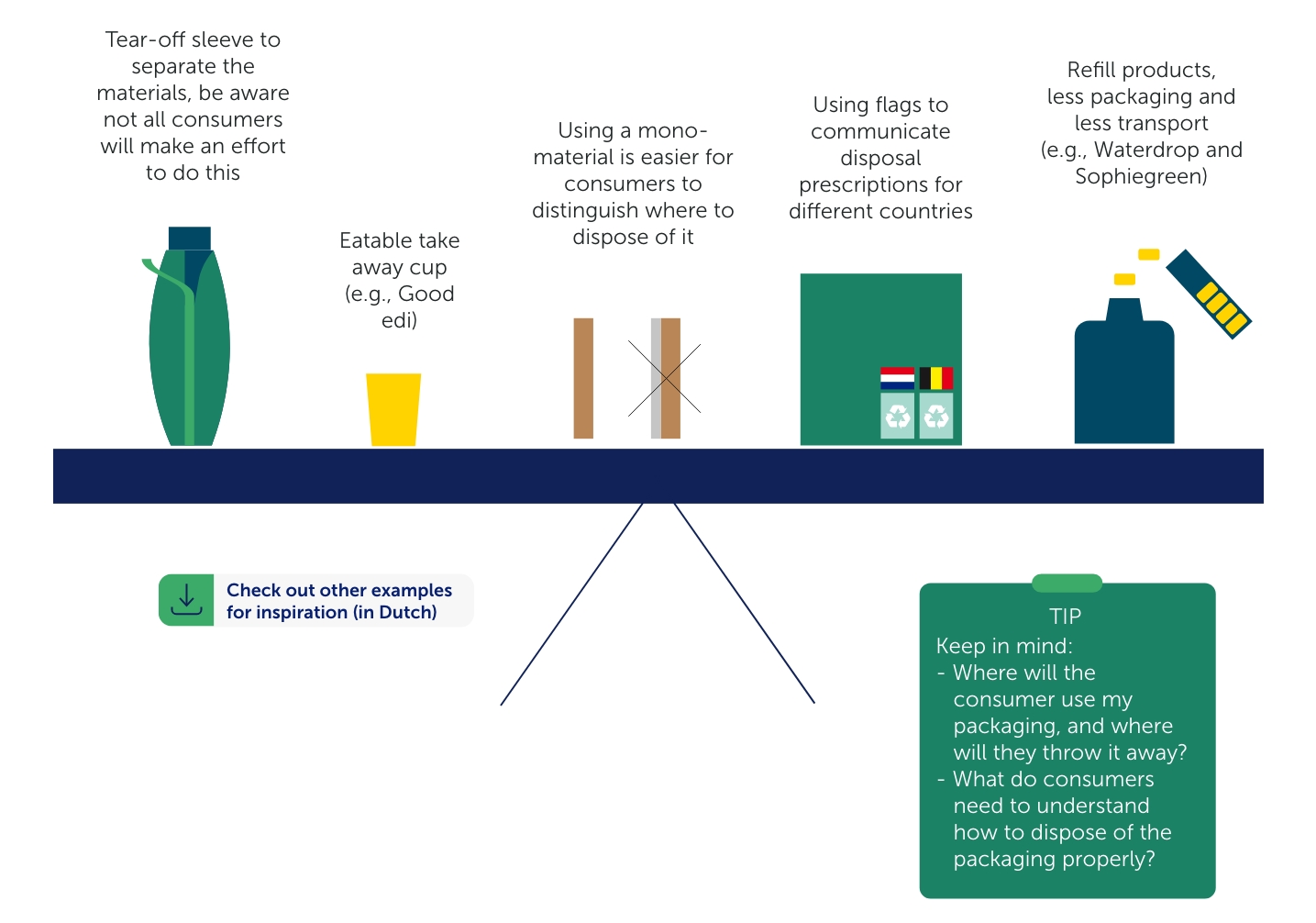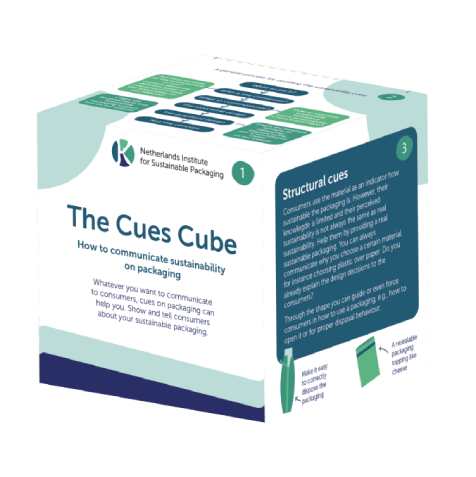Why diving into sustainable packaging?
Hover over the ‘i’ icons to see more information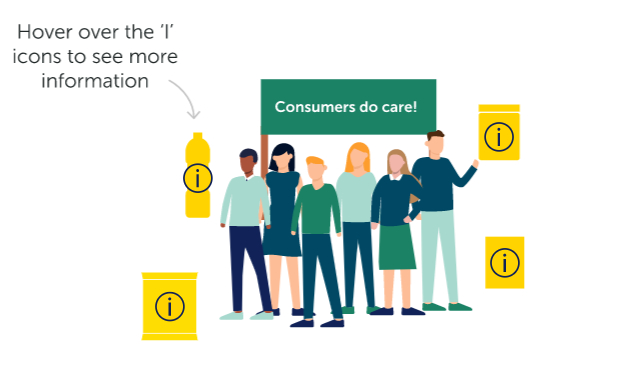
- purchase intention
- choice behaviour
- price & quality perception
- taste impression
- health perceptions
- health perceptions and can evoke an emotional response
We are all responsible and need to cooperate to transition towards sustainable packaging.
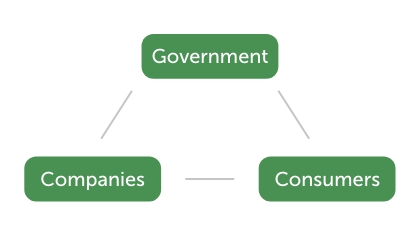
You want to join and be an eco- friendly business, don’t you?
The packaging lifecycle for consumers
This infographic will focus on three consumer behaviours; purchase, use and disposal behaviour.

Purchase behaviour
Sustainability perception of packaging
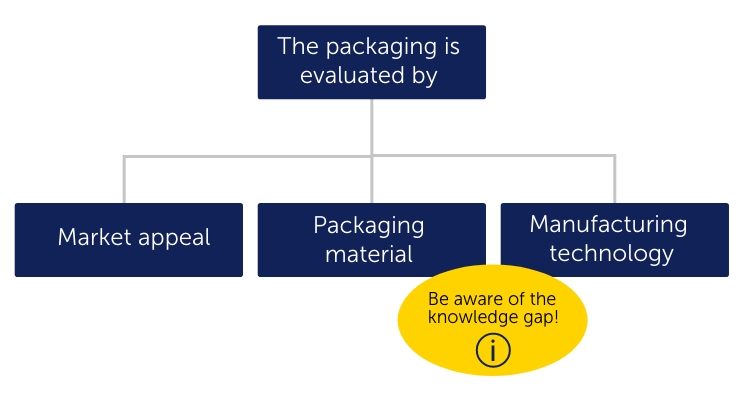
The sustainability perception example below is focused on materials. Download the recycle check to evaluate your packaging material(s).
Go to Recycle Checks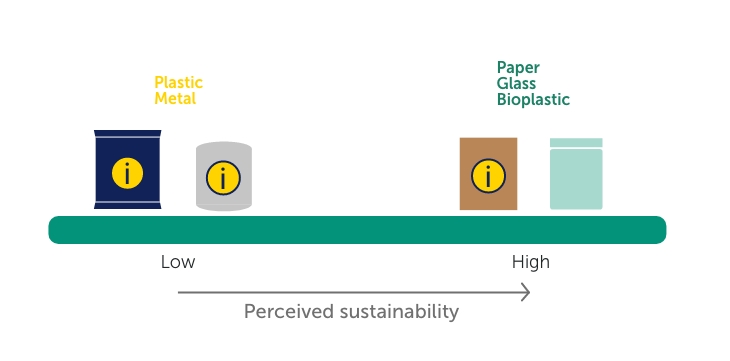
Who is your customer?
The design process starts with what to pack and who your customer is. There are different consumers. Broadly speaking, two big categories can be distinguished regarding sustainability, they are explained below.
Go to Recycle Checks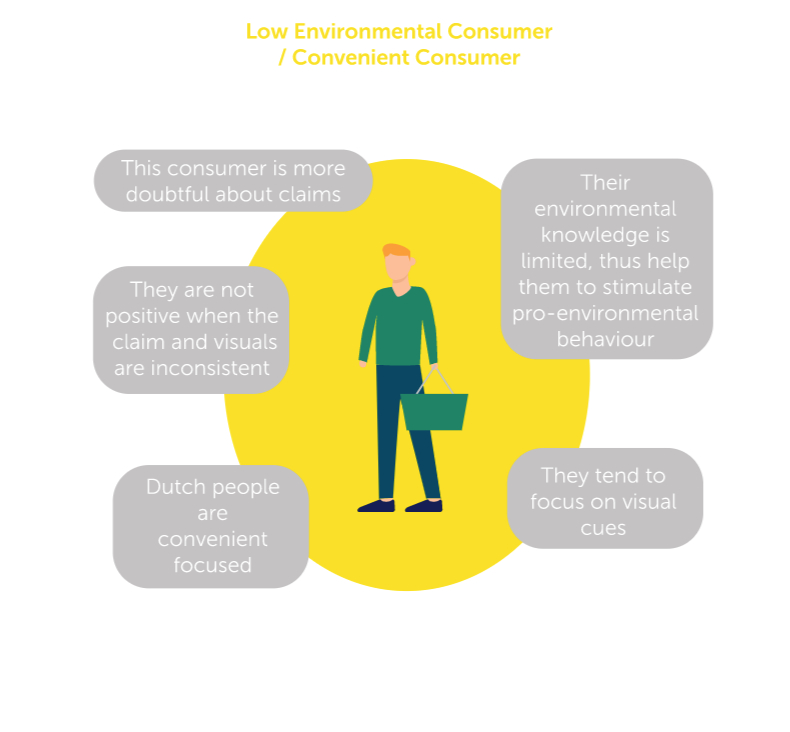
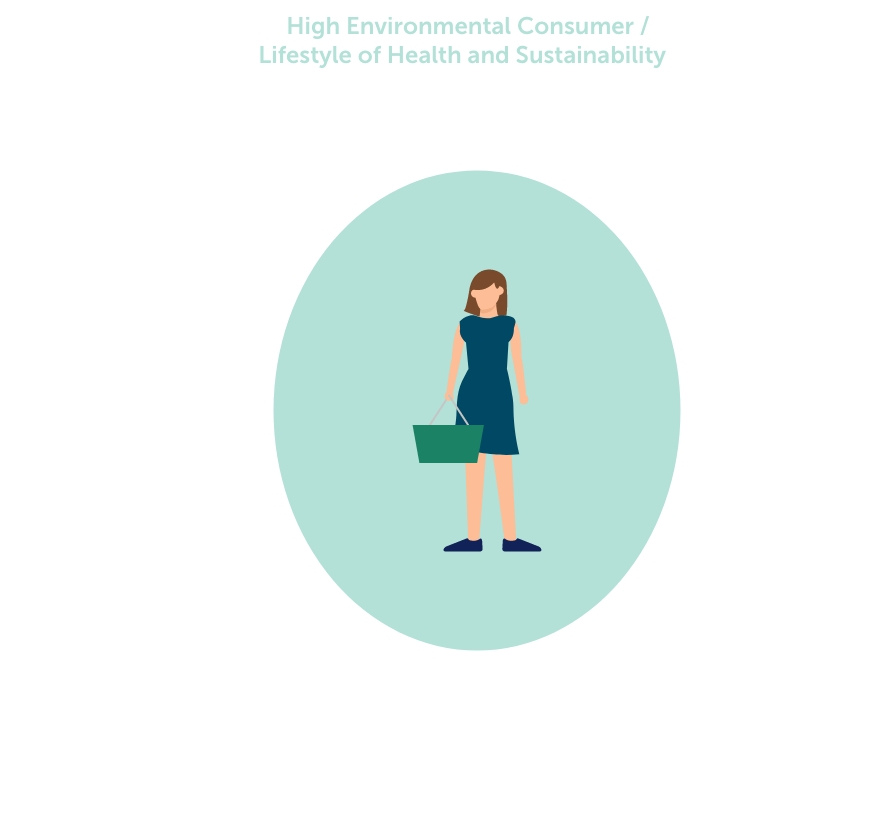
The influence of the environment?

In-shop scenario

Green advertising can work for consumers who don’t show a high environmental involvement. Consumers with a high environmental involvement are already intrinsically motivated: extra green advertising doesn’t lead to a higher purchase intention.
But be aware of compromising on factors like:
- performance
- durability
- convenience
- and taste
How to guide the consumer during the purchase phase?
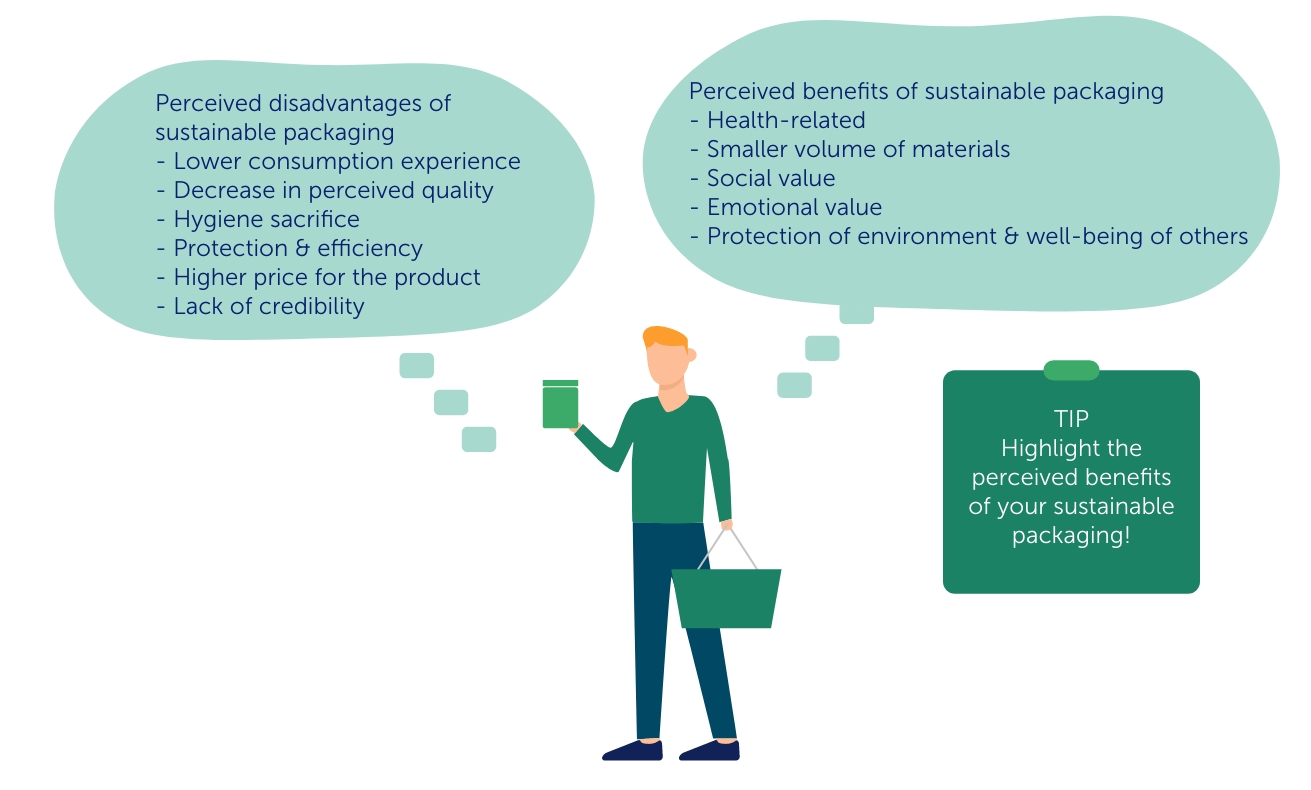
Use cues to inform and attract consumers for the purchase of sustainable packaging

Use behaviour
Food waste vs packaging waste
Find a balance for your packaging. Check The Sustainable Packaging Compass to find out the environmental impact.
What do you pack? Most food waste can be found in the following categories:

At home use scenario

- Unpack it (mostly the case for fruits and vegetables)
- Repack the food
-Make the consumer aware of the packaging’s functionalities, benefits and handling instructions
- Educate consumers through building awareness (e.g., about food waste)
-Present the information on packaging clearly visible
How to help consumers to understand your packaging?
Structural cues can help, there are two types important for the use behaviour:
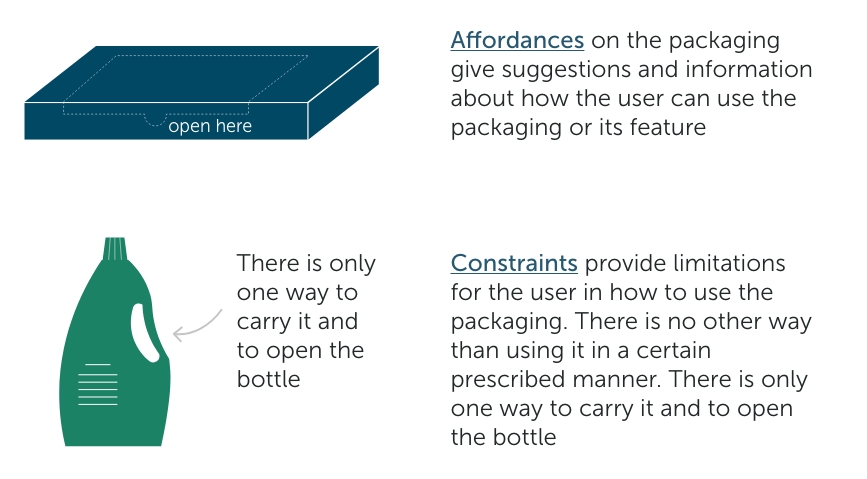
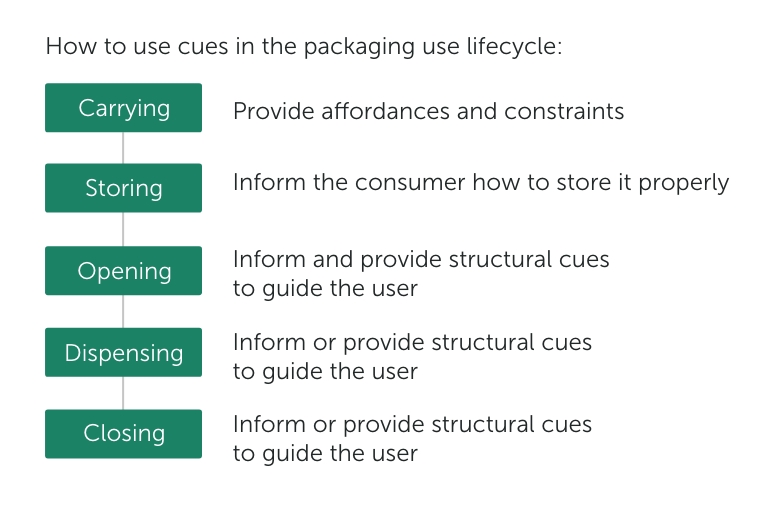
Use cues to inform consumers during the use of sustainable packaging
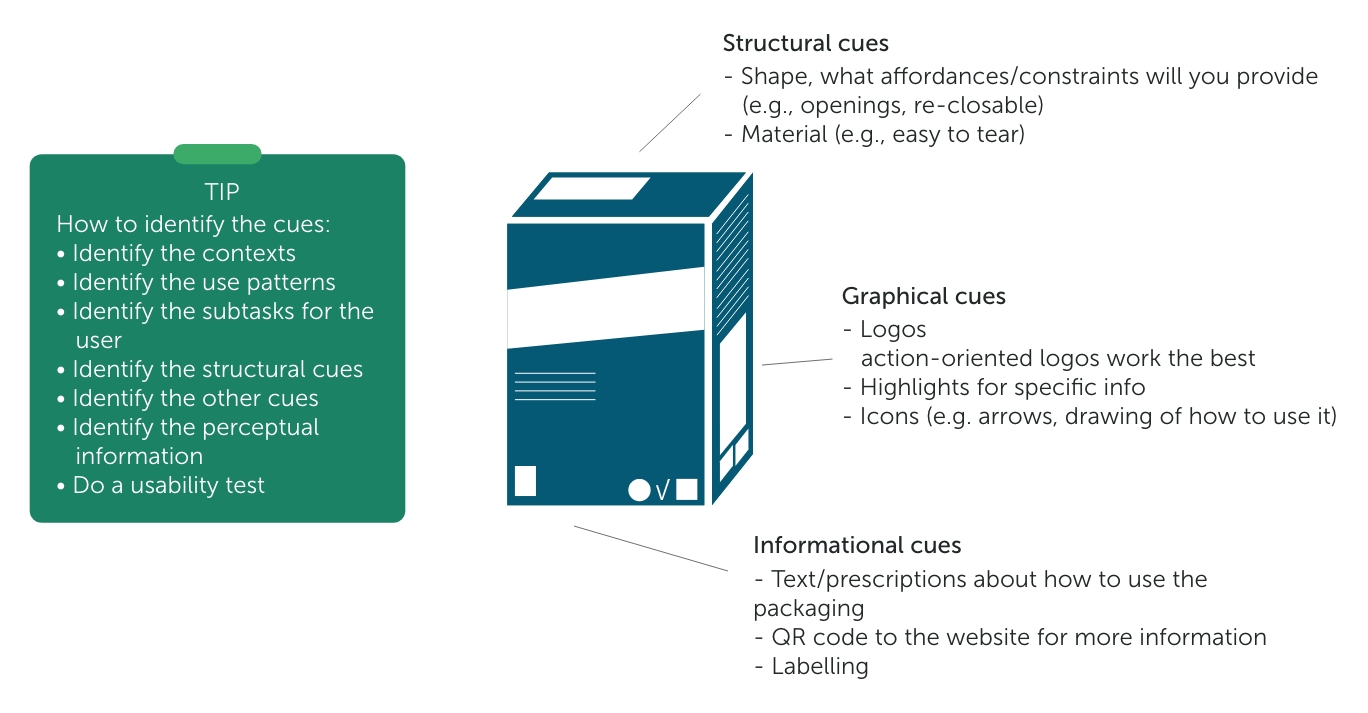
Example packaging for support during the use phase
Disposal behaviour
At home disposal behaviour
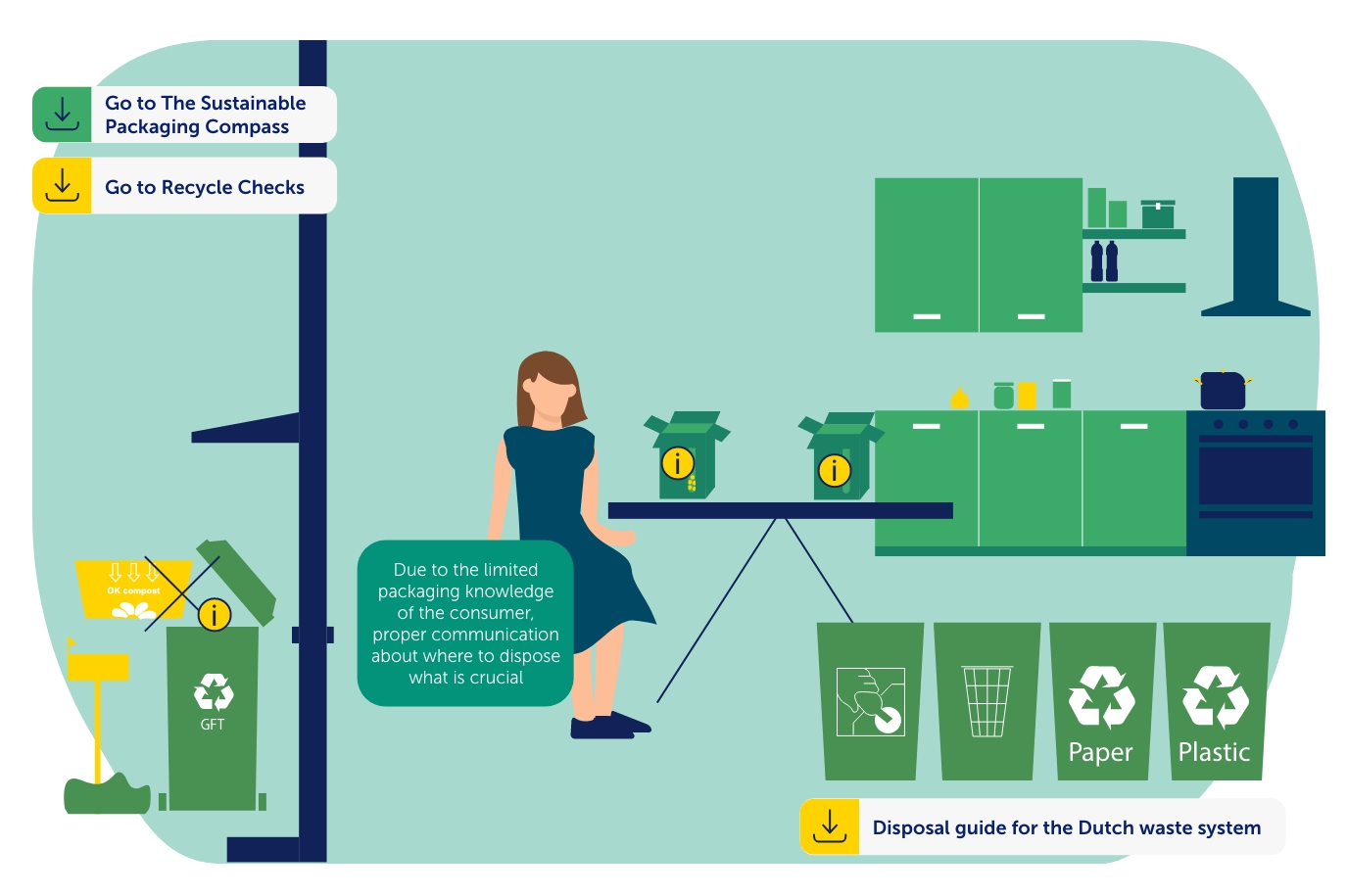
Outdoor disposal scenario
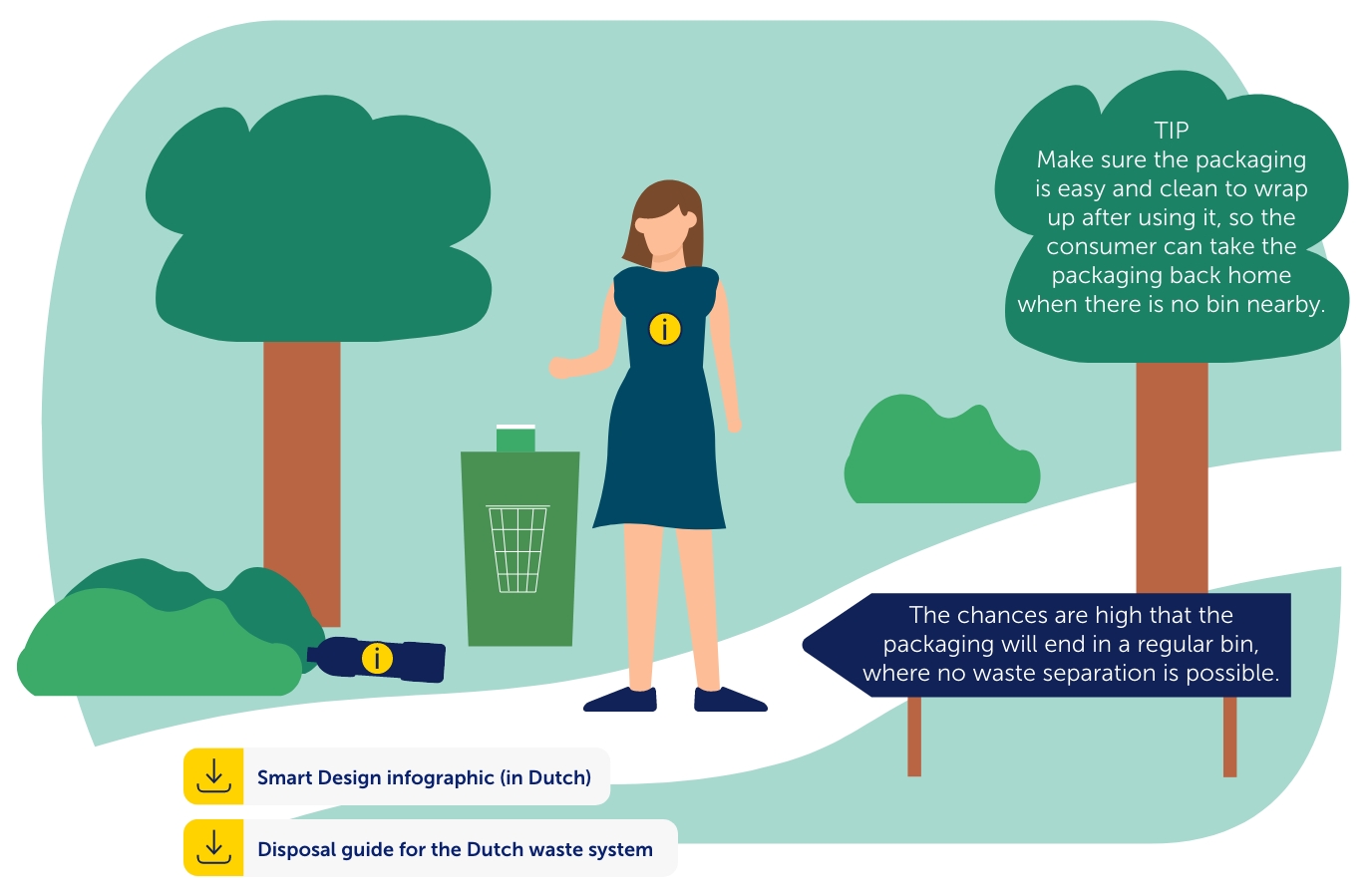
- Packaging which has no loose parts
- reusable design
- recloseable design
- communicate disposal guide icons
- customised packaging for the products to minimise the waste.
What cues could you use for assisting during the disposal phase?
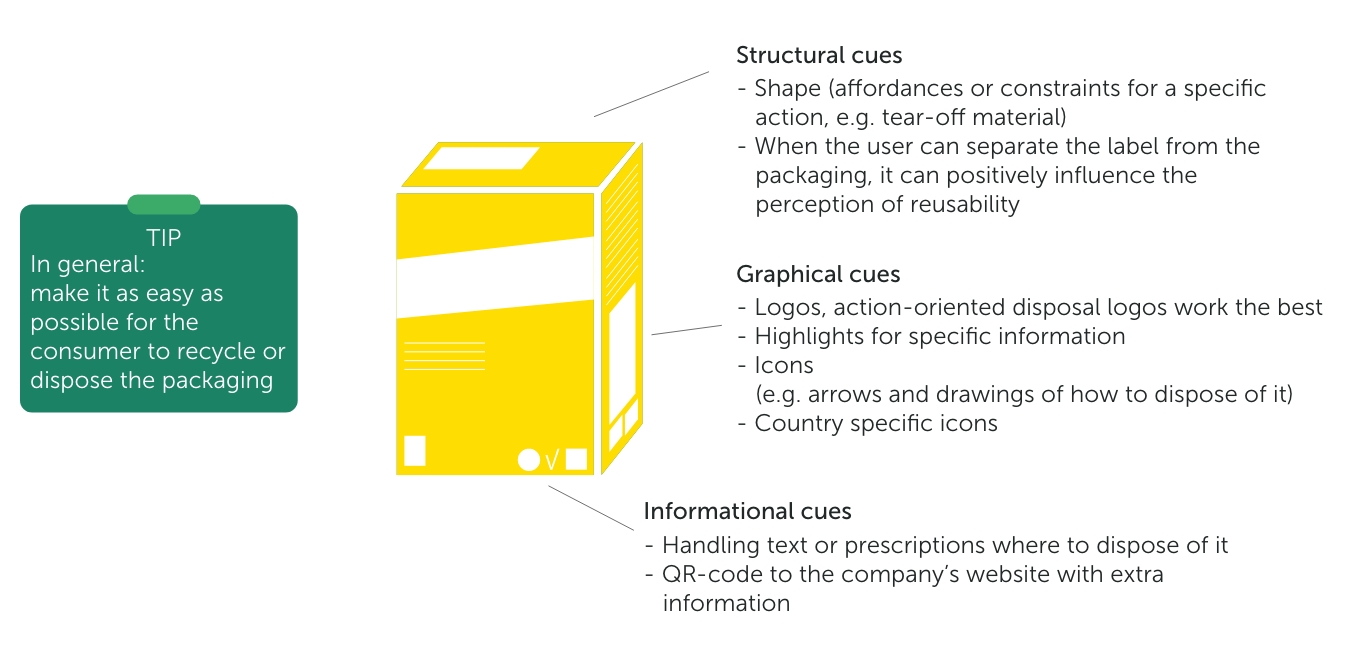
Examples of designing for proper disposal behaviour
In conclusion
To change behaviour, consumers need to have the motivation, opportunity and ability to do so. Below you can find a brief overview of some factors influencing sustainable consumer behaviour.

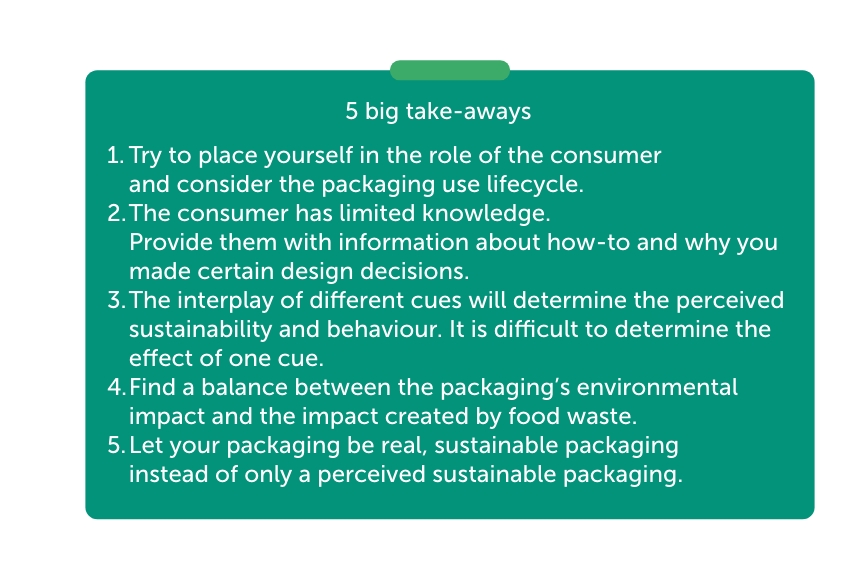
Download and order
Download below the Sustainable consumer behaviour and packaging report for more in-depth information about the theory and strategies! And order below the free Cues Cube for a physical summary of sustainable packaging cues, which one can use at the company!
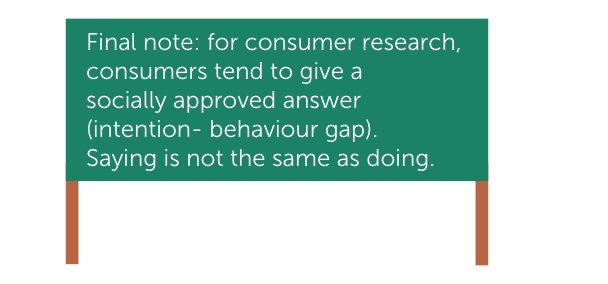
Disclaimer: The Netherlands Institute for Sustainable Packaging has taken the utmost care in compiling this infographic. No rights can be derived from the texts and designs. The infographic uses the Dutch waste environment for the scenarios. Sources can be found in the Sustainable consumer behaviour and packaging report. ©2022
